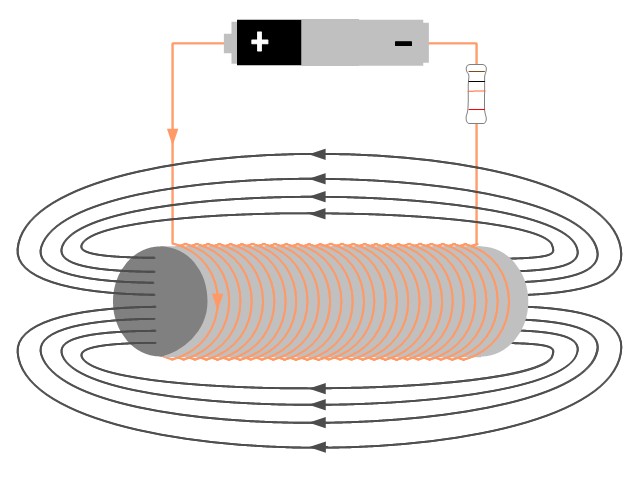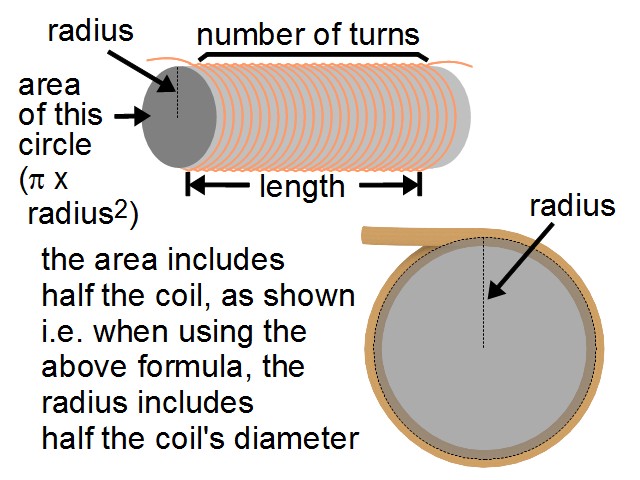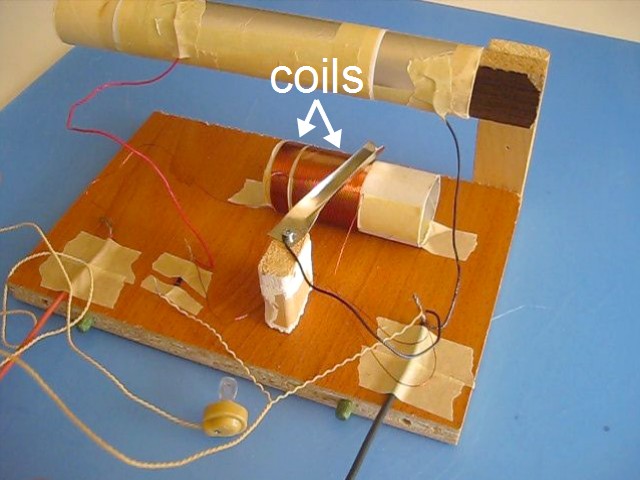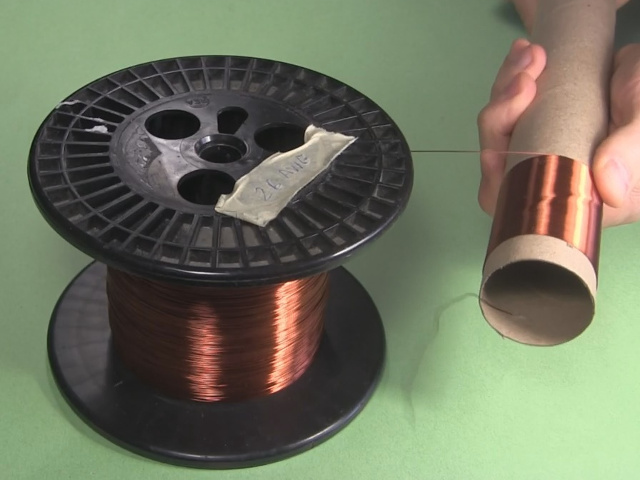Coil design and inductance calculator
This page walks you through designing your own DIY/homemade coil. I've done it for making coils for crystal radios and Tesla coils but it works for any coil that's cylindrical in shape. This is also useful is you're going to be using your coil in an LC tank resonant circuit.
An inductance calculator is provided below for making it easy.
Inductance is often what you are trying to achieve when designing a coil i.e. you know the inductance you want and now you have to design a coil that will have that inductance.
Inductance
Coils have a property called inductance. What is inductance? When electrical current changes as it flows through the wire of a coil, it produces a changing magnetic field that induces (produces) a voltage, or emf (electromotive force), in the wire that opposes the current. That is called induction and inductance is a value quantifying the ability of the coil to induce that voltage. The symbol for inductance is the Henry and the unit is H. Here we're actually talking about the coil inducing the voltage in itself, which is self-induction, but we'll just say induction.


One formula for inductance is as follows:
![Coil inductance formula: inductance = ur x [(number_of_turns squared x area)/length] x 1.26x10^-6](coil_design_inductance/formula_inductance_ur.jpg)
Where:
- L = inductance
- ur = relative permeability of the core material (air = 1)
- turns = number of turns on the coil
- area = the cross sectional area of the core in square meters*, including some of the coil as shown in the diagram
- length = length of the coil in meters*
* The inductance calculator below also takes inches, as well as centimeters and millimeters, and does the conversion to meters for you.
As said above, the μr is the relative magnetic permeability for whatever you're using for the coil's core, the cylinder that you're winding the wire on. That's the greek letter mu, μ, though often the letter u is used for convenience as in ur. If it's a hollow cardboard or plastic tube then the cardboard or plastic counts as air and you can use 1. Materials like iron and ferrite have higher relative permeabilities in the hundreds and thousands. For an iron core, a rough number to use is 100 though it really varies depending on the alloy. The same goes for ferrite which can have value anywhere from 20 to 5000 but if you're at a loss as to what to use then 1000 is a rough compromise. Since it's multiplied by the rest of the formula, that means using those materials will give a higher inductance value. Cores for crystal radio coils are sometimes plastic or cardboard, and therefore are air core coils, and sometimes they're ferrite core. The cores for Tesla coil secondary coils are usually plastic, and smaller ones may be cardboard, and therefore count as air core coils.
And if you're not familiar with the notation 1.26x10-6, it's just another way of writing 0.00000126.
The area includes part of the coil, as shown in the diagram above. If calculating the area using the radius then include the core's radius plus the radius of the wire. If calculating the area using the diameter then include the core's diameter plus the diameter of the wire. Note that when doing calculations for a coil with very thin wire as with the crystal radio and the Tesla coil shown above (e.g. 24 gauge/AWG) then the size of the wire will probably be negligible compared to the area of the core and you can usually ignore the wire.
Inductance calculator
Here's an inductance calculator that uses the above formula. The diagram above can be used as a guide for some of the parameters.
Video - How to Design a Coil for Specific Inductance
In this video I explain the formula for induction in detail, as well as give an example and talk about other factors like coil capacitance, frequency and coupling.



